
Instrument Preamplifier / EQ / DI
Owner’s Manual Rev. A
Grace Design, PO BOX 1812, Lyons, CO 80503
303.823.8100 / info@gracedesign.com
www.gracedesign.com

page 2
1 Welcome
Thanks for purchasing the BiX! Like its bigger siblings
FELiX and ALiX, it is designed to provide performing and
recording musicians, such as yourself, with the highest quality
preamplication available, while being totally reliable and
easy to use. BiX is compact, rugged and great sounding, so
no matter where and how you play - whether you toss it in
your case, or mount it to your pedalboard, you can rely on it to
sound great and work awlessly for many years.
While setup and operation is pretty simple, please take a little
time to read through this manual and familiarize yourself with
its features and functions. It will make a big dierence that
you know exactly what to do to adapt quickly to whatever
conditions may come your way on stage. Most of all, have fun
and go play!
2 Safety and Symbols
Caution: Read Accompanying Documents
This symbol, located on the equipment and in
this manual, refers to important instructions.
Read this manual thoroughly before operating
this equipment.
Service Information
The Grace Design BiX contains no user serviceable
components. Contact Grace Design for repair and upgrade
information. In the event that your Grace Design BiX needs to
be returned to the factory, contact us for a return authorization
number.
3 Features
• 1/4” high impedance input
• Separate FX send and return
• 1/4” unbalanced line output
• Balanced XLR DI transformer iso output
• 10dB variable boost
• Mute and Boost footswitches
• High and Low shelving EQ
• Selectable EQ transition frequencies
• 9VDC operation
• Over 30V internal operating voltage
• Pedalboard friendly design
• 5 year transferable warranty
• Made in the USA
Contents
1 Welcome 2
2 Safety and Symbols 2
3 Features 2
4 Top Panel Controls 3
5 Rear Panel Connectors 3
6 Unpacking and Installing 3
6.1 Installing 3
7 Plugging in 4
7.1 1/4” Instrument Input 4
7.2 Insert Send And Return (Fx Loop) 4
7.3 Line Out 4
7.4 DI Output 4
7.5 9VDC Power Input 4
8 Operation 4
8.1 Setting The Gain 4
8.2 Low EQ 4
8.3 HIGH EQ 5
8.4 EQ basics 5
8.5 Dip Switch Controls 5
8.6 Boost 6
8.7 Boost Switch 6
8.8 Mute Switch 6
9 Block diagram 7
10 Specications 8
11 Cleaning and Care 9
12 Warranty Info 9
13 Manual Revisions 9

page 3
4 Top Panel Controls
1 2 3 4 5 6
7 8 9 10
1. GAIN control
2. SIGNAL present / peak LED
3. LOW EQ control
4. HIGH EQ control
5. BOOST control
6. Power LED
7. Boost footswitch
8. Boost active LED
9. Mute active LED
10. Mute footswitch
5 Rear Panel Connectors
1 2 3 4 5 6 7
1. 9VDC power input – 2.1mm center negative
2. DI out, balanced XLR transformer isolated
3. DIP Switches (ground lift, LOW EQ transition frequency,
HIGH EQ transition frequency)
4. Line out 1/4” TS
5. Insert return 1/4” TS
6. Insert send 1/4” TS
7. Instrument input 1/4” TS
6 Unpacking and Installing
This BiX has arrived to you in a box that features Korvu®
internal packaging, which was carefully designed to protect
its contents from the uncertain world of freight handling. We
recommend you hang on to this box in the event that you
want to ship it somewhere, it will beat having to rummage
around for a box and bubble wrap or worse, Styrofoam
peanuts. This box contains:
• Your new pal, BiX
• 9VDC power supply
• This owner’s manual
In the event that your are missing any of these items, please
contact you retailer or us directly at 303-823-8100 and we will
get you squared away.
6.1 INSTALLING
BiX is designed to operate like any normal footpedal - at your
feet. You can carry it in your guitar case, shoulder bag, upon a
magic oating pillow, or strapped to your pedalboard. If you
choose the latter, you can remove the 4 threaded rubber feet
to allow mounting with Velcro. Hang on to those rubber feet
though, you may want them down the road. Also, remember

page 4
when mounting it to your pedalboard, remember to do so in a
way that preserves access to the Instrument input and the XLR
DI output, as they may need to be plugged and replugged on
a nightly basis.
BiX is powered by a 9VDC input. This jack is a standard 2.1mm
BOSS™ style, with center negative. The current requirement
is 200mA, so you’ll need to make sure you have this available
from your pedalboard power supply. Or, simply use use the
included 9VDC wall wart. We tested many supplies, and this is
the lowest noise, lowest prole one we could nd. If you want
a spare or extras for other 9V pedals, they are available for sale
at our webstore:
http://www.gracedesign.com/merch/accessories.htm
7 Plugging in
By holding the BiX in your hand, you’re probably already have
a pretty good idea what to do from here. Plug it in, turn it up
and go. But keep reading, because there’s some details that
will help you get the most out of your new preamp.
7.1 1/4” INSTRUMENT INPUT
This is for connecting any instrument with a pickup to BiX.
The connector is a standard 1/4” jack wired tip signal, sleeve
ground. This input has a 10MEG input impedance, which
means even nicky high impedance passive pickups are going
to sound great.
7.2 INSERT SEND AND RETURN (FX LOOP)
This is a buered, unbalanced insert point (pre boost) for
connecting outboard eects or tuner to BiX. This allows mono
outboard signal processing to be placed in series with the
signal, while still utilizing all of BiX’s output capabilities. They
are 1/4” TS jacks each wired tip signal, sleeve ground. If you
wish to connect just a tuner to the BiX, you may wire the SEND
to your tuner’s input and leave the RETURN disconnected.
Doing so will allow your tuner to always be active even when
the BiX is MUTED.
7.3 LINE OUT
This output is for sending an unbalanced, non-transformer
isolated output to your tuner, a stage amp or anywhere else
you may need an additional unbalanced signal sent. It is a 1/4”
TS jack, wired tip signal, sleeve ground.
7.4 DI OUTPUT
This output is balanced and transformer isolated, for sending
signal to a front of house, monitor console, or any mixer or
interface where balanced, isolated signal needs to be sent. XLR
pinout is: pin 2 positive, pin 3 negative and pin 1 ground.
7.5 9VDC POWER INPUT
This is where you provide life giving power to BiX. The jack
is a standard 2.1mm BOSS™ style, with the center negative.
Your power supply needs to be capable of delivering at least
200mA. Either use the included Grace Design power supply
unit, or make sure that the supply you are using conforms with
the power input requirements. For example, if using a Voodoo
Labs™ pedal power 2 plus use one of the high current 9V
outputs (jacks 5-6).
8 Operation
8.1 SETTING THE GAIN
The rst control on the left side of the top panel is the GAIN
control. With your instrument connected to the input and
signal owing, turn the GAIN knob clockwise until the signal /
clip LED indicator is on and lit solid green. This will represent a
good operating level. The indicator will start to ash red when
your signal is 10dB before clipping, so an occasional red ash
is ok, but mostly red means you should turn the gain control
down / counterclockwise.
The BiX is designed with extremely high headroom and
dynamic range. If using external eects in the insert of the
BiX, it may be necessary to lower the gain to prevent clipping
in your other pedals. Fear not as the BiX performs beautifully
across its entire gain range.
8.2 LOW EQ
The Low control of the BiX is xed at either 100Hz or 200Hz
transition frequency with a gain range of -15 to +15dB. This is
a xed shelving type control, which means frequencies below
the selected transition frequency are boosted or cut. Use this
control for cutting and boosting bass frequencies. It’s all about
the bass.
GAIN
Hz
40 100 20k12k
0dB
-15dB
+15dB
LOW SHELF EQ

page 5
8.3 HIGH EQ
The High control of the BiX is xed at with a 2kHz or 4kHz
transition frequency, with a gain range of -15 to +15dB. Again,
this is a xed shelving type control, which means everything
above the selected transition frequency is boosted or cut.
Otherwise known as the treble knob. If you think your banjo
may be too bright (which it probably is), turn this knob
counterclockwise. If you think your electric 2 string gourd
needs a little more bite, turn this knob clockwise. If you’re not
sure, start turning it one way or the other until it sounds better.
GAIN
Hz
20
2.0k
20k
HIGH SHELF EQ
0dB
-15dB
+15dB
8.4 EQ BASICS
With such a simple EQ section, it’s easy to make quick, broad
adjustments to you instrument’s signal. You won’t really
be able to chase down and make surgical adjustments to a
particular trouble spot, but you’ll nd with a little practice you
can easily adjust your tone in a useful way. If your instrument
really requires a more surgical approach (i.e. parametric EQ
control), you can easily insert one into the FX loop.
Here’s a couple of tips for getting a sound you like quickly:
Is your instrument:
Too bright or shrill? Turn down the HIGH
Too dull or dark? Turn up the HIGH
Too thin? Turn up the LOW
Too bassy? Turn down the LOW
Want more mids? Turn down the HIGH and LOW controls
and turn up the Gain
Want less mids? Turn up the HIGH and LOW controls
and turn down the Gain
Further EQ adjustments can be made by the DIP switch
controls on the rearpanel. These settings are explained in the
following section.
8.5 DIP SWITCH CONTROLS
These are small switches (located on the rear panel) and
are designed to be hard to move so they don’t become
inadvertently switched. To move them, use the tip of a guitar
pick, car key or something pointy enough to move it up
and down. Unless you are given to lavishly ample pedicure
tendencies, your ngernail may or may not work. Just be
careful not to use something too sharp as to booger up the
switch.
They select the following:
1. GROUND: Selects between ground (gnd) / ground
lift (iso) for the DI output. Use this switch if you are
experiencing a buzzy, unwanted ground noise on your
signal. This will be due do a ground loop somewhere in
your setup between the BiX and other equipment, amps,
mixer etc… If lifting the ground here does not remedy the
problem, you will need to try to lift the ground of other
equipment in your setup.
2. EQ low freq: Selects between the 2 available Low EQ
transition frequencies – 100Hz (low setting) and 200Hz
(high setting). These numbers represent the point at
which the Low EQ lter is at half of its peak gain. These
settings let you voice the EQ’s performance to your
particular instrument. For example, a Bass may benet
from EQ control in the lower part of the frequency
spectrum, in which case the 100Hz setting would be
best. Or if you have a ddle which has very little sound
below 200Hz, the 200Hz setting will be better making
adjustments to the low end of the instrument.
GAIN
Hz
200
40 20k12k
0dB
-15dB
+15dB
LOW SHELF EQ settings
100
low high
3. EQ high freq: Selects between the 2 available High EQ
transition frequencies – 2kHz (low setting) and 4kHz
(high setting). These numbers represent the point at
which the high EQ lter is at half of its peak gain. So these
2 settings eectively let you voice the EQ’s performance
to your particular instrument. For example, an instrument
with particular EQ needs around and above the 2kHz
range may benet from EQ control in the lower part of the
frequency spectrum – for an instrument that needs more
cut or boost of upper mids. Or use the 4kHz setting to only
tailor the higher frequencies of an instrument.
GAIN
Hz
HIGH SHELF EQ settings
0dB
-15dB
+15dB
4K
2K
low high
40 20k
As with all EQ settings, the more you know about what
your instrument needs the better o you will be making
adjustments on the y. We recommend you get to know these

page 6
controls and experiment a lot with them to nd what works
best.
8.6 BOOST
Need to rock a wee bit harder? This knob will let that happen.
It sets the amount your signal is boosted when you activate
the ‘BOOST’ footswitch. Fully counter-clockwise is zero boost
added, fully clockwise adds +10dB of boost. The boost is after
the FX loop and aects both the DI and line outputs.
As you can probably imagine, if you are using a particularly
feedback prone pickup system / acoustic instrument, adding
boost might easily send you in to feedback territory. So start
small. If you need to boost your output, start with a gentle
boost amount and work your way upwards. If you start to hear
stage feedback or are overloading the input at the console,
then you’ll need to back it o.
Disclaimer: BiX and all its associated parties are not responsible
for disgruntled sound people or bandmates you may
encounter during the operation of the boost circuit.
Extra Credit: Try the BiX at the front end of your electric guitar
rig. The boost circuit may just help send the input stage of
your tube amp into a beautiful, earthy overdrive.
8.7 BOOST SWITCH
Yep. This switch activates the Boost circuit, at whatever level
you set with the boost knob. This circuit is global, so the
boosted signal will be coming out of every output. For those
about to rock, you’ll need to activate this switch rst before we
can solute you. The LED will light up AMBER for awesome.
8.8 MUTE SWITCH
This switch mutes the DI and AMP outputs. This enables you
to quickly and easily cut your signal to the FOH or stage amp
and tune or unplug your instrument without having to have
the soundperson mute your channel. When MUTE is active, the
adjacent LED illuminates RED.

page 7
9 Block diagram
ISO BALANCED DI OUT
UNBALANCED LINE OUT
ISO OUTPUT TRANSFORMER
1/4"
UNBALANCED
INS
TRUMENT
INPUT
GAIN
LOW FREQ
BOOST / CUT
HIGH FREQ
BOOST / CUT
BOOST GAIN
SIG / CLIP INDICATOR
GROUND LIFT
INSERT RETURN
REAR PANEL SWITCH
BOOST ON/OFF
MUTE / TUNE
FRONT PANEL KNOB
FOOTSWITCH
CONTROL TYPES:
9V @ 150mA INPUT (2.1mm CENTER = NEG)
POWER SUPPLY
INTERNAL 32V
INSERT SEND
100Hz / 200Hz
2kHz / 4kHz
INSERT NORMAL

page 8
10 Specifications
GAIN RANGE
Line Output 0dB to +37dB
DI Output, Level: Line -29dB to +8dB
Boost 0dB to +12dB
THD+N 22Hz-22kHz BW
1kHz @ 0dB Gain +10dBu out < 0.002%
1kHz @ 20dB Gain +10dBu out < 0.002%
1kHz @ 36dB Gain +10dBu out < 0.005%
INTERMODULATION DISTORTION - SMPTE/DIN 4:1 7kHz/50Hz
@ 36dB Gain +10dBu out < 0.008%
FREQUENCY RESPONSE
Line output @ 20dB Gain -3dB 10Hz – 185kHz
DI output @ -9dB Gain, -3dB 10Hz – 40kHz
I/O IMPEDANCE
Instrument Input 10MΩ
Insert Input 200kΩ
Insert Output 150Ω
Line Output 150Ω
DI Output 150Ω
SIGNAL / PEAK LED METER
Green threshold -13dBu
Red threshold +12dBu
MAXIMUM INPUT LEVEL
Instrument Input +22dBu
Insert Return (0dB Boost) +22dBu
MAXIMUM OUTPUT LEVEL - 100k Ohm load, 0.1% THD
Line Output +22dBu
DI Output (Mic) -7dBu
Insert Output +22dBu
EQ
Gain +/-15dB
Low Frequency (Low Range) 100Hz
Low Frequency (High Range) 200Hz
High Frequency (Low Range) 2kHz
High Frequency (High Range) 4kHz
DYNAMIC RANGE 22Hz-22kHz BW
Minimum Gain, Line Out 129dB
Minimum Gain, DI Out 129dB
OUTPUT NOISE 22Hz-22kHz BW
Minimum Gain, Line Out -107dBu
Minimum Gain, DI Output < -120dBu
Maximum Gain, Line Out -78dBu
Maximum Gain, DI Out -106dBu
POWER
Connector 2.1mm Center Negative
Nominal Input Voltage 9VDC
Nominal Input Current 150mA
Input Voltage Range 6VDC – 12VDC
WEIGHT and DIMENSIONS
1.2lbs (0.55kg) H2.5” x W5.1” x D4.5” (H6.35cm x W13.0cm x D11.4cm)

page 9
11 Cleaning and Care
Your BiX chassis is constructed out of high quality aluminum and steel. Under normal circumstances, very little maintenance is
required to keep it looking good. However, if you nd it getting more dirty or dusty than you like, here are some cleaning tips: We
recommend using a little shot of Windex™ applied to a clean, dry, lint free cloth. Gently wipe all surfaces, taking care not to allow
the cleaning product to build up around or under the knobs.
12 Warranty Info
• Grace Design warrants this product to be free of defective parts and workmanship for a period of ve years. This warranty
period begins at the original date of purchase and is transferable to any person who may subsequently purchase the product
during this time.
• This warranty excludes the following conditions: normal wear and tear, misuse, customer negligence, accidental damage,
unauthorized repair or modication, cosmetic damage and damage incurred during shipment.
• During the time of this warranty, Grace Design will repair or replace, at its option, any defective parts or repair defective
workmanship without charge, provided the customer has appropriate proof of purchase and that the product has its original
factory serial number.
• In order for Grace Design to provide ecient and timely warranty service, it is important that you mail the completed
warranty registration card enclosed with all of our products within 10 days of the original date of purchase. You may also
register your product directly with Grace Design by telephone (303-823-8100 Monday-Friday 9:00am to 5:00pm MST), or you
can register your product online at www.gracedesign.com.
• This warranty is in lieu of all other warranties whether written, expressed, or implied, INCLUDING ANY WARRANTIES OF
MERCHANTABILITY OR FITNESS FOR A PARTICULAR PURPOSE.
• In no event will Grace Design be liable for lost prots or any other incidental, consequential or Exemplary damages, even if
Grace Design is aware of the possibility of such damages. In no event will Grace Design’s liability exceed the purchase price of
the product.
• This warranty gives the customer specic legal rights. The customer may also have other rights, which vary from state to state.
Some states do not allow limitations on implied warranties or consequential damages, so some of the limitations of the above
may not apply to a particular customer.
13 Manual Revisions
Revision Page Change Date Initials
A all Initial release 01/24/2017 edg
-
 1
1
-
 2
2
-
 3
3
-
 4
4
-
 5
5
-
 6
6
-
 7
7
-
 8
8
-
 9
9
Ask a question and I''ll find the answer in the document
Finding information in a document is now easier with AI
Related papers
-
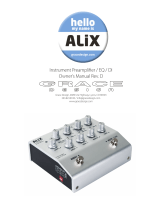 Grace Design ALiX Owner's manual
Grace Design ALiX Owner's manual
-
Grace ALiX Owner's manual
-
Grace ALiX Owner's manual
-
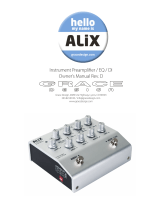 Grace Design ALiX Owner's manual
Grace Design ALiX Owner's manual
-
Grace FELIX Owner's manual
-
Grace FELIX Owner's manual
-
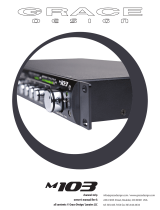 Grace Design M103 Owner's manual
Grace Design M103 Owner's manual
-
Grace FELIX Owner's Manual Preliminary
-
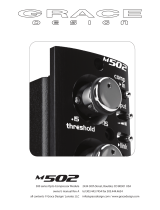 Radial Engineering M502 Owner's manual
Radial Engineering M502 Owner's manual
-
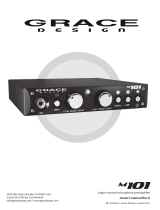 Grace Design M101 Owner's manual
Grace Design M101 Owner's manual
Other documents
-
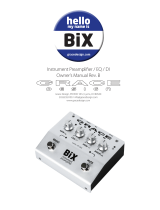 Grace Design BiX Owner's manual
Grace Design BiX Owner's manual
-
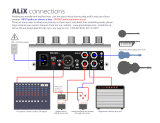 Grace Design ALiX User guide
Grace Design ALiX User guide
-
 T-REX Fuel Tank Classic Owner's manual
T-REX Fuel Tank Classic Owner's manual
-
Avaya Bix Box Wiring User manual
-
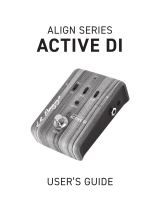 L.R. Baggs Active Di User manual
L.R. Baggs Active Di User manual
-
Winegard Prostar 1000 PR-7010 User manual
-
Avaya Bix Box Wiring User manual
-
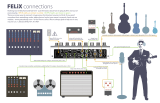 Grace Design FELIX User guide
Grace Design FELIX User guide
-
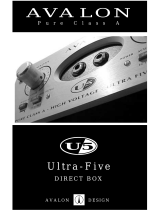 Avalon U5 User manual
Avalon U5 User manual
-
DKS 1812 - 12V 1A Power Transformer User manual



















